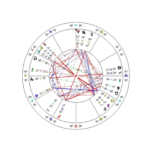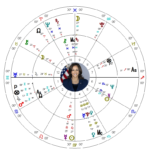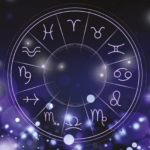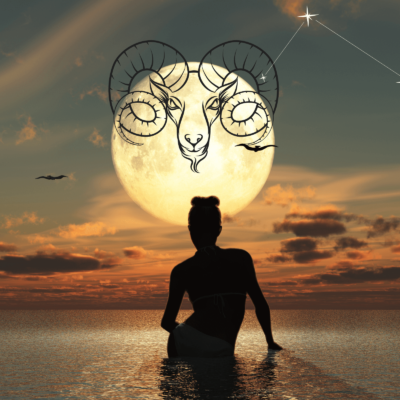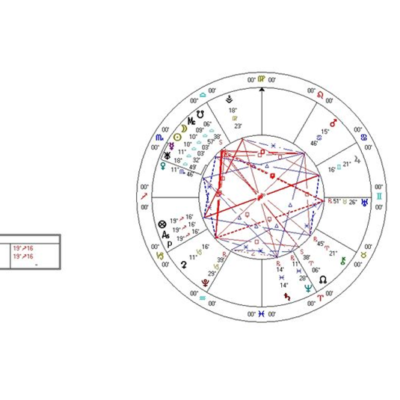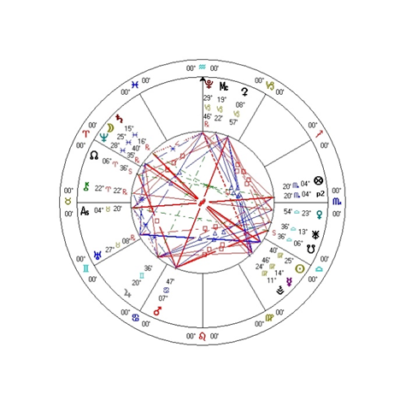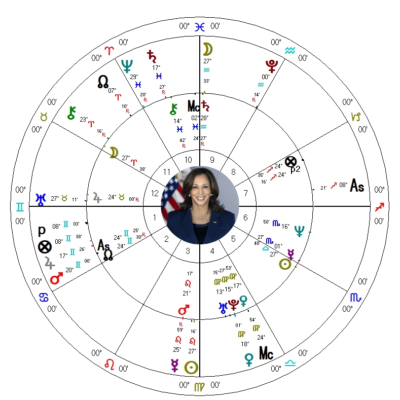My lifelong journey with astrology has been one of continuous exploration and discovery. For over half a century, I’ve delved into the vast and intricate world of celestial influences, seeking a deeper understanding of the human experience and the cosmos. I’ve traversed the landscapes of modern and traditional astrology, navigating through diverse house systems, planetary rulerships, and interpretive techniques.
My initial foray into astrology began in the 1960s, guided by the pragmatic teachings of Noel Tyl. His no-nonsense approach, emphasizing chart construction and a disciplined interpretation framework, provided a solid foundation for my astrological studies. With a compass, ruler, Swiss Ephemeris, and calculator in hand, I embarked on a quest to decipher the celestial code, creating charts for friends and family. I also immersed myself in the works of renowned astrologers like Liz Greene, Marc Edmund Jones, Dane Rudhyar, and countless others.
Early Encounters and Influences
During those formative years, I was fortunate enough to cross paths with Isabel Hickey, a luminary in the astrological community. Sharing my hand-drawn chart with her, I sought guidance on my life’s purpose. Her insightful response, recognizing my “beautiful Grand Trine in Air” and Mars as my leading planet in the 10th house, confirmed what I had already sensed: my destiny lay in astrology.
My early astrological practice was met successfully, attracting clients and witnessing the transformative power of astrological readings. I even ventured into the realm of “parlor-style” astrology, hosting an astrology hotline and entertaining guests at parties with celestial insights. However, fate intervened, and a lucrative opportunity on Wall Street beckoned. For three decades, I pursued a successful career in finance, though my passion for astrology remained a constant undercurrent.
The Revival of Traditional Astrology
In recent years, I’ve experienced a reawakening of my astrological fervor, fueled by the resurgence of traditional astrological practices. This revival, spearheaded by brilliant minds like Chris Brennan, Demetra George, Robert Hand, and Kelly Surtees, has ignited a renewed appreciation for the ancient wisdom of the Babylonians and Greeks.
This resurgence has led me to re-evaluate my astrological approach, shifting my focus from the modern interpretations prevalent in the mid-20th century to the time-tested techniques of traditional astrology. This transition has been nothing short of transformative, providing a clearer and more nuanced understanding of astrological principles.
The Modern Astrology Era: A Time of Transition
The astrology practiced from the 1950s through the 1980s, often referred to as “Modern Astrology,” was characterized by its reliance on the Placidus or Koch house systems and its inclusion of Uranus, Neptune, and Pluto as rulers of Aquarius, Pisces, and Scorpio, respectively. While this approach offered valuable insights, it also presented certain challenges, particularly the issue of intercepted signs and houses.

In modern astrology, using the Placidus or Koch systems, intercepted houses were a common occurrence, especially at higher latitudes. This phenomenon often left astrologers grappling with the concept of “lost” planets—celestial bodies that seemed to lack a clear connection to a house cusp.
I, like many astrologers of that era, accepted the modern rulerships and wrestled with the complexities of intercepted houses. However, as I delved deeper into the history and philosophy of astrology, I began to question the validity of these modern interpretations.
A Return to Ancient Wisdom
A few years ago, I encountered the work of Chris Brennan, a leading figure in the revival of traditional astrology. His research, along with the contributions of Demetra George and other dedicated astrologers, opened my eyes to the rich and nuanced practices of the ancient Babylonians and Greeks.

This resurgence of traditional astrology, often referred to as Hellenistic astrology, involves a return to classical planetary rulerships, the use of whole sign houses, and a renewed emphasis on the concept of sect. This shift has been nothing short of revelatory, akin to transitioning from a dimly lit chiaroscuro to a vibrant technicolor landscape.
The Whole Sign house system, in particular, has resolved the issue of intercepted houses, providing an unambiguous connection between planets and house cusps. By embracing this system and the classical rulerships, I’ve found that my astrological interpretations have become more accurate and insightful.
Under the guidance of Kelly Surtees and other luminaries in the field, I’ve rediscovered the beauty and wisdom of traditional astrology. It’s a system that honors the ancient roots of this celestial art while offering a fresh perspective on its timeless principles. This journey of relearning and rediscovery has reignited my passion for astrology, filling me with a profound sense of purpose and excitement for the future.
Key Differences: Modern vs. Traditional Astrology
The shift from modern to traditional astrology has opened up a new world of understanding. Here are some key distinctions:
- House Systems: Modern astrology often uses the Placidus or Koch house systems, which can lead to intercepted houses and ambiguities in interpretation. Traditional astrology favors the Whole Sign house system, providing a clearer and more consistent approach.
- Planetary Rulerships: Modern astrology assigns Uranus, Neptune, and Pluto as rulers of Aquarius, Pisces, and Scorpio, respectively. Traditional astrology reverts to the classical rulerships, with Saturn ruling Aquarius, Jupiter ruling Pisces, and Mars ruling Scorpio.
- Sect: Traditional astrology emphasizes the concept of sect, determining whether an individual is born during the day (solar) or night (lunar). This distinction influences the interpretation of planetary influences and the overall chart reading.
- Benefics and Malefics: In traditional astrology, the Sun, and Jupiter are the benefics for day charts, while the Moon and Venus are the benefics for night charts. Mars is the malefic for day charts, and Saturn is the malefic for night charts. Understanding these distinctions provides valuable insights into an individual’s strengths and challenges.
- Parental Associations: Traditional astrology associates the 4th house with the father and the 10th house with the mother, a reversal from modern astrology’s interpretations.
Now that we have reviewed some key differences, I think it is worthwhile to look a little deeper.
Sect: The Sun and Moon as Celestial Guides
In traditional astrology, chart interpretation begins with a fundamental observation: the time of birth. Was the individual born during the day, under the Sun’s radiant glow, or at night, bathed in the Moon’s gentle luminescence? This distinction, known as sect, holds profound implications for understanding the planetary influences at play.
Individuals born between sunrise and sunset are considered to be of the solar sect, with the Sun as their “guiding light.” Their planetary team is led by the Sun, with Jupiter as their benefic (planet of blessings and expansion) and the opposite of sect planet Mars as their likely most malefic planet or the most challenging and irritating planet. However, a person born during the night is likely to experience Saturn as malefic and a planet that causes the most restrictions and delays in areas of their life. Those born at night belong to the lunar sect, with the Moon as their guiding luminary. Their team is led by the Moon, with Venus as their benefic, and Mars in a nighttime birth chart may be energizing and not as agitating as found in the daytime chart.
Solar vs. Lunar: A Matter of Temperament
This division into solar and lunar sects reflects a fundamental difference in temperament and outlook. Solar individuals are typically more extroverted, expressive, and action-oriented. They radiate warmth and enthusiasm, seeking to shine their light in the world. Lunar individuals, on the other hand, are often more introverted, receptive, and intuitive. They are drawn to the depths of emotion, the mysteries of the subconscious, and the power of imagination.
A person born during the day is likely to be “more solar,” more extroverted, whereas a person born at night is likely to operate more intuitively and possibly have the inclination to be introverted.
The Importance of Sect in Chart Interpretation
As an astrologer, recognizing an individual’s sect is essential for accurate chart interpretation. A solar person’s chart will reveal different nuanced themes than a lunar person’s chart. It’s crucial to understand that to interpret a chart accurately, it is necessary to make note of the difference between a daytime-born entity and one born at night. Of course, in modern times, because so many births are scheduled, there is likely a significantly higher percentage of daytime births.
Benefics and Malefics: The Forces of Fortune and Challenge
The benefics and malefics for each sect offer further insights into an individual’s strengths and challenges. For solar individuals, Jupiter brings opportunities for growth and expansion, while Saturn tempers their resilience and teaches valuable lessons. For lunar individuals, Venus fosters love, harmony, and creativity, while Mars can ignite passion, drive, and a need for self-assertion. By understanding these planetary dynamics, I can help clients navigate their lives with greater awareness and purpose.
In any case, modern astrology over the last 30 years or so has evaluated these ancient traditions. As many Greek astrological texts have been translated, many astrologers now allude to themselves as Hellenistic astrologers as we are reviving, honoring, and practicing Traditional Astrology. We marvel at the wisdom and insights that have been revealed in the last 30 years or so.
So, in modern astrology, I have learned to look at which Luminary is dominant, and whichever that is, in accordance with this tradition, that Luminary is the Sect leader. I would then carefully examine how the Benefic planet, which aligns with the sect leader, can bring connection, happiness, and opportunities into that person’s life.
For example, if the person is born during the day, the Sect Leader is the Sun, and the Benefic planet working to nourish, provide connection, and harmony would be Jupiter. I would be looking at how Jupiter might influence the chart by examining the houses ruled by Jupiter and the house placement of Jupiter to help the client understand how to resource this planet. In general, the benefic planet of the sect will describe areas of life that offer good fortune.
If the person is a nighttime chart, born after the sun sets or before sunrise, then the Moon is the Sect Leader, and Venus is the Benefic that I would help the client connect with and resource. I would be looking at aspects or planetary angles to the benefics to further illustrate areas of life where the person may harvest joy or ease.

In a daytime chart, the more Malefic, troublesome, or provocative planet will be Mars. In a nighttime chart, the Malefic that is more troublesome and can cause delays, constriction, or problems is Saturn. So as a consulting astrologer, I would be looking at the more troublesome Malefic to help the client understand areas of life where the Malefic planet is providing trouble.
In modern astrology, the interpretations are influenced by the Sect leader, the Benefic of the same sect, and the Malefic planet that is not of the same sect. This is key, core, conceptual, and important in the interpretive process for the client to glean or understand.
These concepts are powerful and useful, and no one was practicing this way when I started my practice in the late 1960s or thereabouts. In modern astrology, as practiced by Hellenistic revivalists, the concept of Sect is foundational.
Planetary Rulerships and House Systems: Unveiling the Cosmic Architecture
A fundamental distinction between modern and traditional astrology lies in their approach to planetary rulerships and house systems. In modern astrology, the outer planets Uranus, Neptune, and Pluto were assigned rulership over Aquarius, Pisces, and Scorpio, respectively. However, traditional astrology reverts to the classical rulerships established in ancient times, restoring a sense of balance and harmony to the astrological system.
In traditional astrology, each of the five visible planets—Mercury, Venus, Mars, Jupiter, and Saturn—rules two signs. Mercury governs the realms of communication and intellect, ruling Gemini and Virgo. Venus, the planet of connection, love, and beauty, holds dominion over Taurus and Libra. Mars, the warrior planet, governs the fiery signs of Aries and the watery depth of emotions found in Scorpio. Jupiter, the benevolent giant, rules Sagittarius with the traits of generosity, perhaps a love of travel and learning, and over Pisces where mystical wisdom and boundless compassion reside. Saturn, the taskmaster, presides over Capricorn enforcing structure and method, and Aquarius providing rules of law and organization. The Sun, the source of life and vitality, rules Leo, and the Moon, the celestial body closest to Earth, governs Cancer.
The Moon in traditional astrology describes you, your body, as well as your childhood and emotional nature. Traditional astrology also carefully examines the phase of the Moon the person is born under. All moon signs are not alike, a person born during a new Moon phase functions in a different lunar manner than a person born during a quarter moon or gibbous moon phase (perhaps the subject for further writing).
This system of rulership, often described as a “thing of beauty,” is remarkably balanced, reflecting the yin-yang duality of masculine and feminine energies. It simplifies chart interpretation while adding layers of elegance and meaning. Each planet’s rulership lends its unique flavor and characteristics to the houses it governs, creating a rich tapestry of interconnected meanings.
In traditional astrology, the concept of rulership is paramount. Planets are viewed as the “landlords” of the houses they govern, while planets residing within those houses are considered “tenants.” This dynamic adds a layer of depth and nuance to chart interpretation, revealing the intricate interplay of planetary energies within the individual’s life.
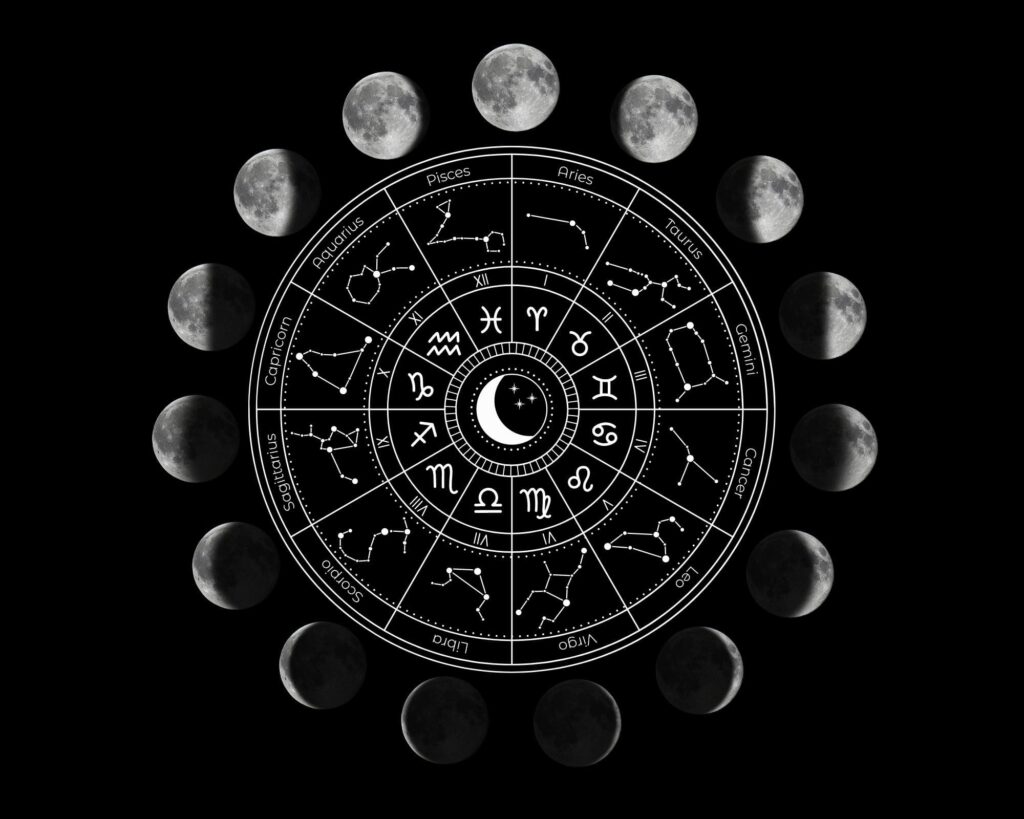
Whole Sign Houses: A Return to Simplicity and Clarity
Another key distinction between modern and traditional astrology lies in their preferred house system. While modern astrologers typically use the Placidus or Koch house systems, most traditional astrologers, including myself, have embraced the Whole Sign house system. This system, which divides the zodiac into twelve equal houses, aligns perfectly with the classical rulerships, offering an unambiguous connection between planets and houses.
The Whole Sign system eliminates the issue of intercepted houses, a common occurrence in quadrant house systems like Placidus and Koch, where a sign can be entirely contained within a house, leaving planets without a clear house rulership. This system also recognizes that the Midheaven (MC), the point in the chart associated with career and public image, may not always fall in the 10th house. Instead, the MC’s placement is influenced by latitude, and the house it occupies reveals a lifelong focus for the individual.
When I redrew my chart using the principles of Hellenistic astrology, my MC fell in the 9th house, the house associated with higher learning, spiritual wisdom, publishing, and philosophy. This resonated deeply with me, as I’ve always been a lifelong learner with a passion for exploring spiritual themes through writing.
Parental Associations: A Shift in Perspective
One final, striking contrast between modern and traditional astrology lies in their association of houses with parental figures. Modern astrology traditionally associates the 10th house with the father and the 4th house with the mother. Traditional astrology reverses this association, placing the father and early childhood experiences in the 4th house, while the 10th house often signifies the mother or the individual’s experience of their mother.
The Enduring Legacy of Traditional Astrology
Traditional astrology is a treasure trove of wisdom, offering a multitude of fascinating techniques and concepts. Traditional astrology provides a rich and nuanced approach to chart interpretation, from the use of the Lot of Fortune and the Lot of Spirit to various timing methods.
As I continue to explore the depths of this ancient art, I am filled with awe and gratitude for the astrologers who have dedicated their lives to preserving and reviving these time-tested techniques. Their work has opened up a world of possibilities, allowing us to connect with the wisdom of our ancestors and gain a deeper understanding of ourselves and the cosmos.
In Conclusion: A Journey of Rediscovery
My journey from modern to traditional astrology has been a transformative experience, a homecoming to the roots of this celestial art. By embracing the ancient wisdom of the Hellenistic astrologers, I’ve rediscovered the beauty, elegance, and profound insights that astrology has to offer.
As I continue to learn and grow as an astrologer, I invite you to join me on this journey of exploration and discovery. Together, let’s unlock the secrets of the stars and uncover the hidden truths that lie within our birth charts.


